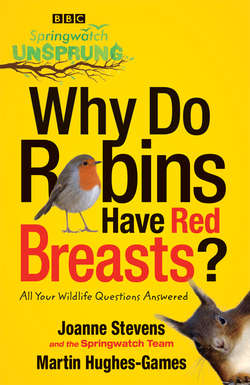Читать книгу Springwatch Unsprung: Why Do Robins Have Red Breasts? - Jo Stevens - Страница 27
Feeling Sleepy?
ОглавлениеIs it just mammals that yawn or do all animals yawn? Helks
Yawning isn’t unique to humans or even mammals but there can be confusion over what constitutes a yawn. Animals may show their wide-open mouths in a variety of situations. This is not necessarily a yawn but may be a gape. Opening the mouth fully can be part of a threat display used to show off fearsome teeth, such as in baboons. Birds may display open beaks during a courtship display.
A ‘real’ yawn is usually involuntary and starts with a large intake of breath, stretching the mouth wide, and then an exhalation. If the yawn is accompanied by a good stretch then it is delightfully known as ‘pandiculation’. Most vertebrates appear to do this to some degree. Despite being such a widespread behaviour and one that we experience regularly there is no obvious reason for or benefit of yawning. Yawning is seen as a sign of boredom or tiredness, but why would either of those states instigate a great, big yawn?
One long-held theory is that yawning is triggered by a lack of oxygen or a build-up of carbon dioxide – taking a large breath counteracts this by drawing in oxygen and expelling carbon dioxide. This seems to be hot air though. In experiments, increasing the levels of carbon dioxide or oxygen in a controlled atmosphere had little effect on how often people yawned. Another idea is that yawning is used to cool the brain. Yawning seems to be suppressed by an ice pack on the forehead or when the air is warmer than body temperature. Yet neither of these theories can account for why unborn babies yawn in the womb – even an eleven-week-old foetus has been shown to yawn. Yawning does appear to increase blood flow to the brain (the heart rate may increase) and promote alertness.
Have you yawned yet? One thing we do know about yawning is that it is highly contagious. It’s almost impossible to restrain a yawn once you’ve seen someone else yawning and even reading about it can trigger the reflex. This has led some biologists to believe that contagious yawning, is a sign of empathy, the ability to understand someone else’s state of mind and emotions. People with less developed empathy, such as children under about four years old and those with autism, don’t find yawning so contagious.
Yawning may have evolved to be contagious as a form of social bonding or group communication. A few other species also find yawning infectious and both chimpanzees and dogs that live in social groups will yawn in response to others. One theory is that this would allow the group to synchronise their rest periods or increase general alertness to compensate for one member’s tiredness. It just goes to show that there is plenty left to discover about human and animal behaviour, even with something as seemingly straightforward as a yawn.
